This past Sunday I mounted a full expedition out to Suffolk County on Long Island with Andrew Baksh, otherwise known as Birding Dude. We saw a bunch of great birds (a full post on the day is in the hopper) but an Arctic Tern (Sterna paradisaea) was easily the best bird of the day, at least if one is taking rarity in New York State as the best metric by which to measure. Having only seen one Arctic Tern ever prior to this one I was extremely happy to see it, both for the intrinsic enjoyment of seeing such a short-legged tern and for the joy of checking it off my New York State list (number 341 if anyone is interested). Not only that, but we were out on the mudflats at Cupsogue with some of New York State’s best birders, including Shai Mitra, who, while we were viewing the tern, discussed every possible feature of the bird in exquisite detail. It was educational and fun!
Arctic Terns are an amazing animal in that every year they migrate from their breeding grounds in the Arctic (though some breed as far south as New England) to the oceans around Antarctica, a roughly 24,000 mile round trip. Wikipedia has some interesting tidbits related to this amazing migration:
This 19,000 km (12,000 mi) journey each way ensures that this bird sees two summers per year and more daylight than any other creature on the planet. The average Arctic Tern in its life will travel a distance equal to going to the moon and back—about 500,000 miles (800,000 km). One example of this bird’s remarkable long-distance flying abilities involves an Arctic Tern ringed as an unfledged chick on the Farne Islands, Northumberland, UK, in summer 1982, which reached Melbourne, Australia, in October 1982, a sea journey of over 22,000 km (14,000 mi) in just three months from fledging. Another example is that of a chick ringed in Labrador, Canada, on 23 July 1928. It was found in South Africa four months later.
The bird we saw was a second-summer bird, which was typical in that the Arctic Terns that show up in New York during breeding season tend to not be full adults. Most immature birds don’t make the long migration but am I ever glad this one did! We briefly also had a second-summer Common Tern in view that gave nice comparisons, but once one knew that an Arctic Tern was on the mudflats it was relatively easy to pick out, even when something flushed all of the terns and they resettled in different locations. And, of course, the Arctic Tern was easy to pick out by the distinctive call…but enough typing, I lugged scope and camera out on the mudflats for one reason and one reason only, and that was to bring back pictures for you, the loyal 10,000 Birds reader, so enjoy!
In the picture above a Common Tern is in the foreground: note the difference in head shape.
We will have a post up soon that will give much more detail on how to differentiate Arctic Terns from Common Terns so you won’t have to write in “Comic Tern” on your day list when you see a tern that you can’t distinguish. Until then get out there and look at those terns…who knows what is mixed in with that flock!
This post has been submitted to Bird Photography Weekly # 44 and Digiscoping Today – Week 8. Go check them out!


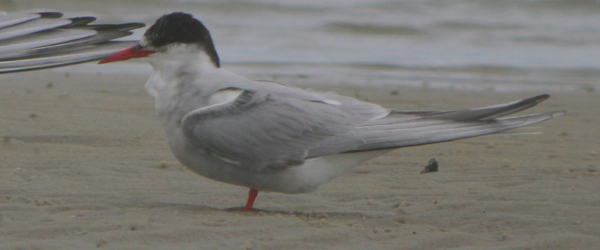
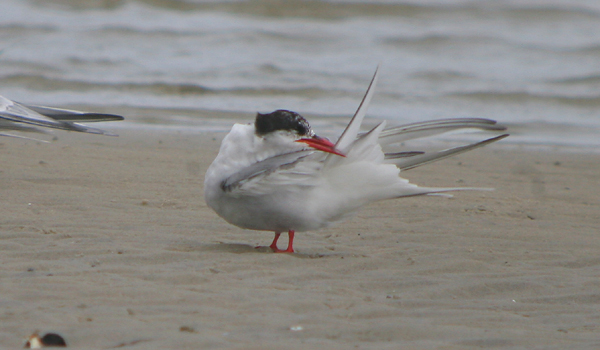
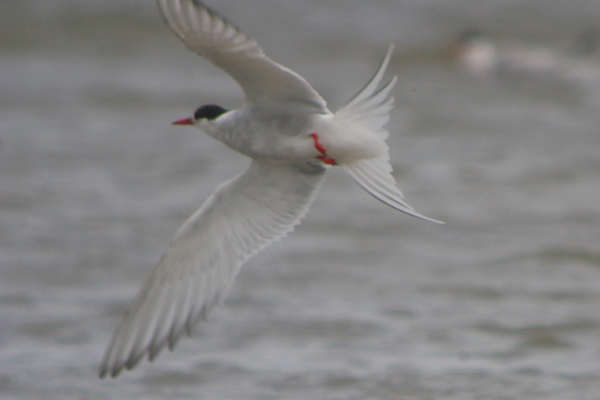
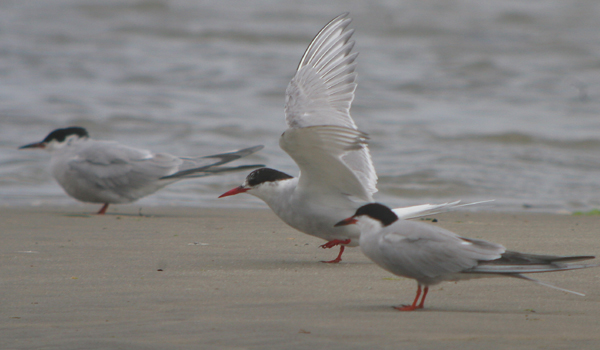
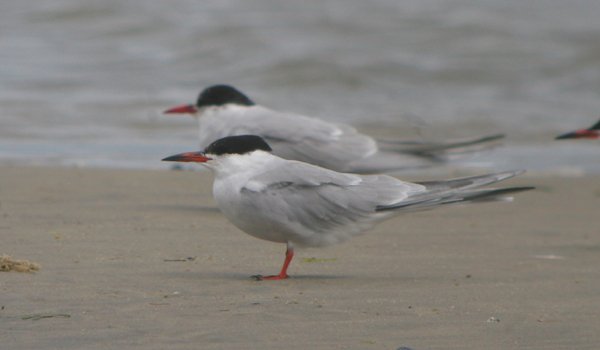



 New writers welcome – please contact us for details.
New writers welcome – please contact us for details.

















Aw man, I wish I could have joined you. Would’ve been a lifer for me.
What about your other target birds for that trip?
@Patrick: Next time…
@Will: There will be a another post soon enough.
Just read about your trip on Birding Dudes blog. Would have been a few life birds for me.
I invited birding dude to our Birders who Blog, tweet and chirp outing July 11 starting in Milford CT check out the Bloggers who are attending..you might know a few. Birding dude may come…Let me know on that post if you would like to come..I will add you to our list
http://tinyurl.com/lflskh Luke from Under Clear skies will be leading us around the area.
Yes, if you’re going to bird terns or shorebirds, it’s always best to set up your scope next to Shai. I saw many Arctic Terns when I was in Iceland, but was surprised that I could pick one out of a group when I was down in Jacksonville, Florida back in May. They have such short legs!
Really an outstanding day of birding for both of us. Nice shots of the Arctic Tern. I have to think about switching to an SLR setup for the digiscoping. The Canon A590 is not giving me the shots that I want. See you in the field.
@Dawn: I’ll let you know if I can make it…
@Donna: Shai is the expert…and finding one in Florida must be nice!
@Andrew: I certainly had a great time. We’ll be back out again soon I’m sure!
Luke has a blog post about the event.. Great stuff planned and great bloggers..should be excellent..send me a meesage if you want to attend!
http://is.gd/1jffZ
It sounds like a great time was had by all Corey. Nice shots of the Arctic Terns too. It would have been a lifer for me! Love the comparison capture of the Arctic and Common Terns in one frame.
Great shots, Corey! Sounds like y’all had a fun outing. And thanks for showing the differences between the two terns in that last photo. I could easily distinguish these guys from the Royal Terns we see the most of down here on the Gulf Coast, but wouldn’t have even noticed the difference between these two.
They look awfully similar to me. Love the 4th photo, I think it’s starting a moondance 🙂